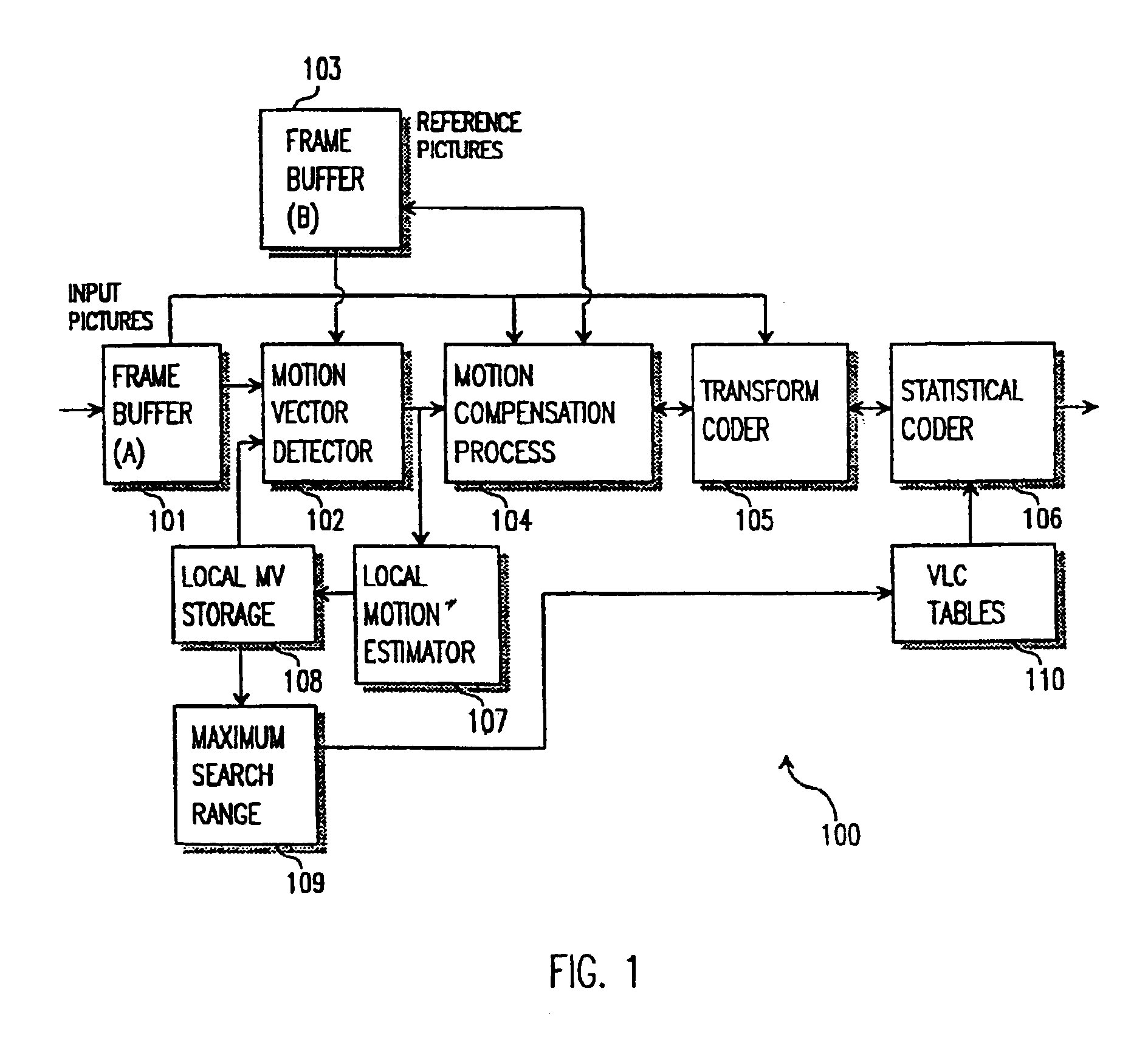Motion vector detection with local motion estimator
a local motion estimator and motion vector technology, applied in the field of encoding moving picture sequences, can solve the problems of increasing implementation complexity and power consumption, increasing the complexity of implementation, and the size of the search window has a direct impact on the computation load, so as to optimize the cache size and frame buffer memory bandwidth requirements of search window, the effect of expanding the search rang
- Summary
- Abstract
- Description
- Claims
- Application Information
AI Technical Summary
Benefits of technology
Problems solved by technology
Method used
Image
Examples
Embodiment Construction
A block diagram of a picture sequence encoder according to a preferred embodiment of the present invention is illustrated in FIG. 1. A moving pictures sequence, which may be in the form of video signals, is input to a frame buffer (A) 101 for re-ordering and processing requirements (eg. raster to macroblock conversion). The moving pictures sequence may be pre-processed before inputting. Useful pre-processing techniques may include noise reduction, inverse telecine, and chroma subsampling.
A picture coding type (I, P, or B-picture) is determined using known methods according to application needs for each picture in the input picture sequence. An I-picture is an intra-coded picture used mainly for random access or scene update, a P-picture uses forward motion predictive coding with reference to a previously coded I or P-picture (anchor picture), and a B-picture uses forward and backward motion predictive / interpolative coding with reference to previously coded I and / or P-pictures. An in...
PUM
 Login to View More
Login to View More Abstract
Description
Claims
Application Information
 Login to View More
Login to View More - R&D
- Intellectual Property
- Life Sciences
- Materials
- Tech Scout
- Unparalleled Data Quality
- Higher Quality Content
- 60% Fewer Hallucinations
Browse by: Latest US Patents, China's latest patents, Technical Efficacy Thesaurus, Application Domain, Technology Topic, Popular Technical Reports.
© 2025 PatSnap. All rights reserved.Legal|Privacy policy|Modern Slavery Act Transparency Statement|Sitemap|About US| Contact US: help@patsnap.com



